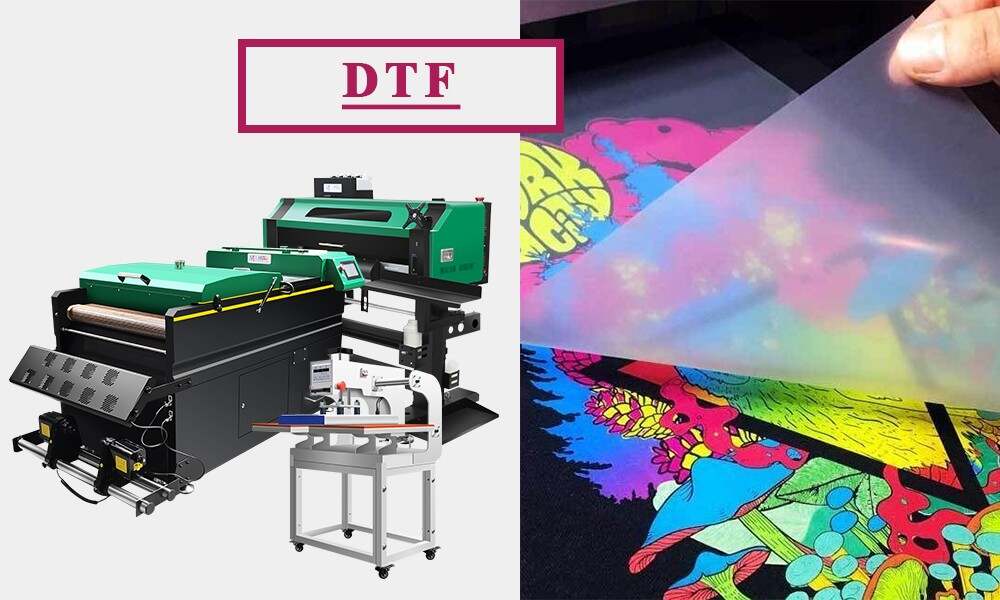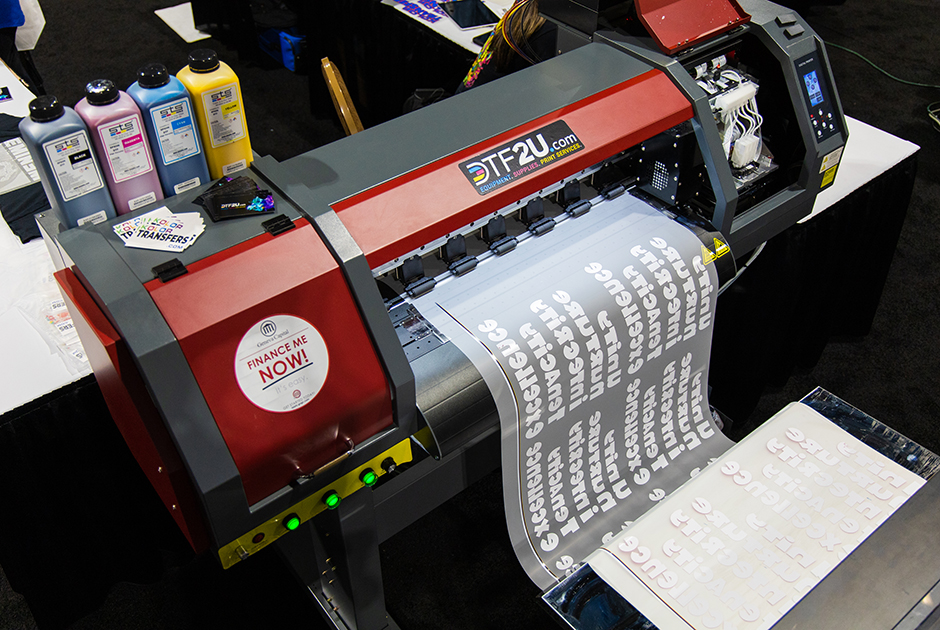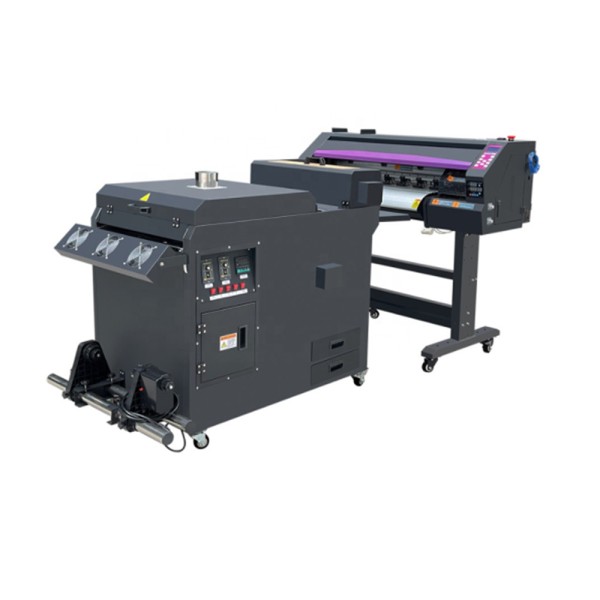DTF Printing Proficiency: Boost Your Fabric Creations with Direct-to-Film Innovation
DTF Printing Proficiency: Boost Your Fabric Creations with Direct-to-Film Innovation
Blog Article
Mastering DTF Printing: Advice for Getting Vibrant and Resilient Prints
In the globe of textile printing, accomplishing sturdy and dynamic prints is a desired ability that can elevate the high quality of your result. Mastering DTF (Straight to Movie) printing calls for a blend of technical expertise, accuracy, and attention to detail. From choosing the right materials to tweak print setups and developing post-printing finishing methods, there are many variables that can influence the outcome of your prints. Comprehending exactly how to browse these details can make all the distinction between a mediocre result and a really phenomenal one.

DTF Printing Essentials
For those brand-new to the world of textile printing, recognizing the principles of DTF printing is necessary to grasping this ingenious technique. Straight to Film (DTF) printing is a modern method that entails transferring designs from an unique film onto various fabrics utilizing a warm press. Unlike traditional approaches like screen printing, DTF offers benefits such as dynamic colors, complex outlining, and the ability to publish on diverse products like cotton, polyester, and blends.
The process starts by printing the layout on a special DTF film utilizing a compatible printer with CMYK or CMYKW ink sets. When the design is published, it is then treated with a heat press to produce a durable and long lasting print. DTF printing is known for its ability to replicate complex layouts with high precision and shade precision, making it a prominent selection for services looking to produce custom clothing, advertising items, and a lot more.
Choosing the Right Materials

The adhesive powder acts as a bonding representative between the printed layout and the material, so it must have solid bond homes to ensure a sturdy and resilient transfer. By very carefully selecting the right products for DTF printing, printers can boost the top quality, vibrancy, and longevity of their prints.
Optimizing Publish Setups
When intending to attain the most effective results in DTF printing, meticulous interest to enhancing print settings is important for guaranteeing precise and high-quality transfers onto fabrics. When enhancing print setups is the resolution, one essential facet to consider. Greater resolutions typically lead to sharper and extra comprehensive prints, boosting the overall high quality of the transfer. In addition, adjusting the ink density can aid achieve dynamic shades and make certain that the style sticks out on the textile.
Another essential setting to enhance is the print speed. Discovering the ideal equilibrium in between speed and high quality is necessary. While boosting the rate can enhance effectiveness, it may jeopardize the final print's clarity and color saturation. Trying out different rates and observing the outcomes can aid establish the optimum setup for every print task - DTF Printing.
Furthermore, make improvements shade profiles and ensuring correct shade administration are important for achieving consistent and exact shades across various prints. By calibrating color setups and profiles, printers can minimize shade discrepancies and produce consistent results, boosting the general print quality and consumer fulfillment.
Preparing Artwork for DTF Printing
To make certain ideal results in DTF printing, careful attention to information is vital when preparing artwork for transfer onto fabrics. Begin by selecting high-resolution pictures to keep clarity and intensity in the last print. Vector graphics are liked as go to my blog they can be quickly scaled without losing top quality. Convert the art work to CMYK color mode to ensure that the colors convert precisely from display to print. Adjust the shade levels and contrast as required to enhance the vibrancy of the style. When including text to the art work, choose font styles that are legible and appropriate for the desired dimension. Keep in mind to mirror the last design before publishing to make certain that it transfers properly onto the garment. In addition, consider the material kind and color when selecting the art work, as these variables you can try here can affect the final look. By adhering to these steps and paying close interest to the information, you can prepare art work that is maximized for dynamic and long lasting DTF prints.
Post-Printing Finishing Techniques
Carrying out effective post-printing finishing strategies is vital to improving the sturdiness and visual allure of DTF prints on fabrics. Once the printing process is full, applying heat to the published style is important.
After heat pushing, removing the PET movie very carefully is an important step. This procedure must be done slowly and continuously to stop any damages to the print. Once the movie is eliminated, the print might need added treating time to further establish the ink into the textile. This action helps enhance the washability and resilience of the print, ensuring it can endure several laundry cycles without fading or splitting.
Furthermore, cutting any excess film around the layout can give the final print a tidy and professional appearance. Taking the time to appropriately end up DTF prints post-printing can about his considerably affect the total quality and longevity of the fabric layout.

Verdict
In conclusion, grasping DTF printing needs a thorough understanding of the basics, choosing proper products, maximizing print setups, preparing artwork effectively, and using post-printing completing methods. By adhering to these methods and tips, one can achieve resilient and lively prints that satisfy their preferred high quality requirements. Constant method and interest to detail are necessary in accomplishing effective results in DTF printing.
From choosing the best materials to tweak print settings and refining post-printing finishing techniques, there are numerous variables that can affect the end result of your prints. Unlike standard techniques like screen printing, DTF offers advantages such as vivid shades, complex outlining, and the capability to print on varied products like cotton, polyester, and blends.
When the design is printed, it is after that treated with a warm press to create a durable and durable print.When aiming to attain the finest results in DTF printing, meticulous focus to enhancing print settings is critical for making sure accurate and top quality transfers onto textiles.In verdict, grasping DTF printing requires a detailed understanding of the fundamentals, selecting proper materials, maximizing print settings, preparing art work efficiently, and making use of post-printing completing strategies.
Report this page